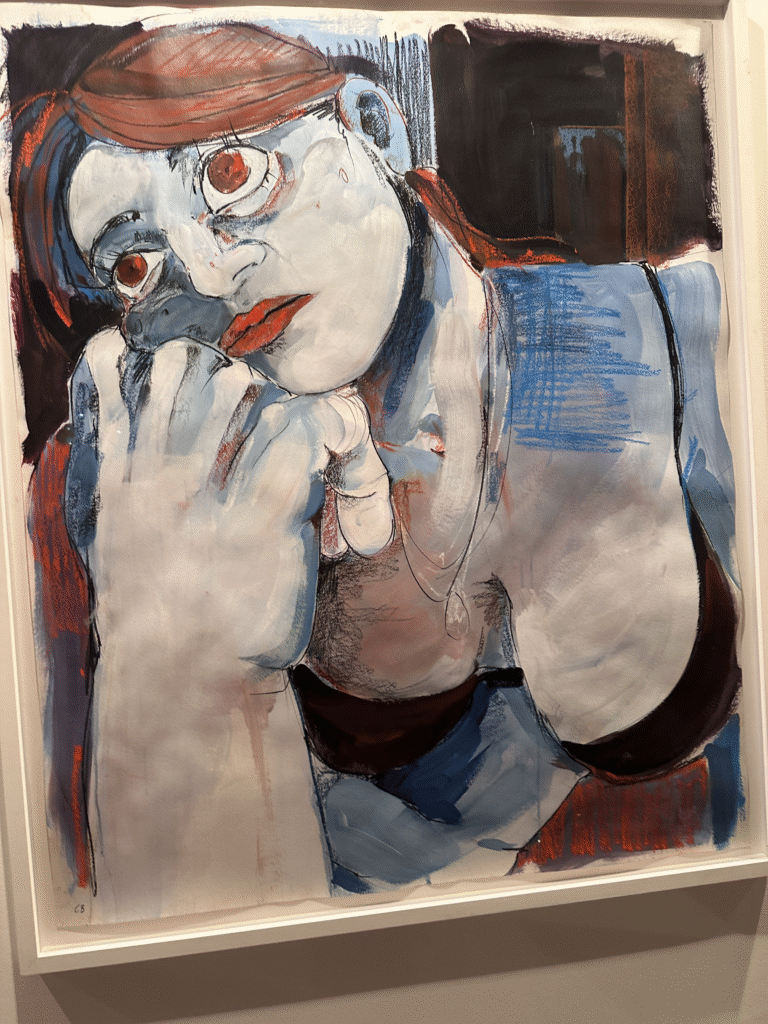
A fellow artist once advised me to stop alienating potential buyers of art. He said, “Don’t whine about capitalism or you won’t succeed in it.”
I actually think he’s correct. So if you own stuff, then go away. This one is for the renters.
I recently attended a very expensive gallery exhibition in Tribeca, land of the financiers.
The place was crawling with an archetype best described as WASPs: quiet, center-left rich people who summer in the Hamptons and winter in Ibiza. WASPs can often be identified by appearance—long, delicate faces with untarnished hands, and either malevolent or naive eyes. Never honest eyes, though. But the best way to identify them isn’t appearance—it’s the quality and sophistication of their banter.
They’re experts at talking to each other, wielding the delicate verbiage of politicians, though their speech screams: success at all costs in capitalism.
I didn’t invent the term, and I’m not calling old-money white people insects for no reason. “WASPs” is a 19th-century term, short for White Anglo-Saxon Protestants—a socially dominant and often affluent group. They remain the largest demographic of gatekeepers and art investors in NYC.
To be clear, I prefer the quiet rich over the loud rich. These old-money bureaucrats just want to fill their homes with vibrant contemporary art—and I’m all for it. Actually, I’m desperate for them to like me. They seem to clock that I come from relative poverty immediately, though.
At the event, I found myself in an elevator with a pair—an older and a younger woman. The elder looked me up and down and blurted, “You’re an artist, aren’t you?”
“What gave it away?” I asked her deaf ears.
She didn’t respond—because of the deafness—but I already knew the answer. I was wearing poor-people clothes and I looked terrified.
Later, they inspected a very odd sculpture alongside me. It was a coffee table with a bunch of tiny furniture forms glued all over it. The younger of the pair turned to me and said,
“Wow, I’m astonished this exhibition has a—” (insert weird artist-sounding name) “—piece.”
I just nodded and smiled. It felt like an attempt to gauge how knowledgeable I am of the scene.
During the event, I took a quick hiatus to breathe and call someone close to me.
“This place is crawling with WASPs,” I exclaimed, trying to express my discomfort.
“Luckily, just like actual wasps, they’re more scared of me than we are of them.”
My mother used to say that about the actual bug: they fear people more than we fear them.
“Real wasps serve their queen. They don’t experience fear—only mechanistic loyalty,” came the reply through the phone.
I then pictured the countless wars and the types of people who profited off of them throughout history.
And I marveled at how strange it was to find myself on the outskirts of the hive. Me—a little ladybug, or some other bug that rents its living accommodation instead of lording over others.
I don’t seek to vent dissatisfaction with wealthy people—not shallowly, anyway. I hope I’ll be one someday, and I’ll certainly find myself interacting with them more. I’m just trying to understand why some of my interactions with them feel tense.
They’re human, just like me—even if they have fifty million more dollars. And a lot of them are filled with compassion and authenticity.
In fact, I had excellent interactions with most of them—especially the host of the event.
I’ll leave it at that.
